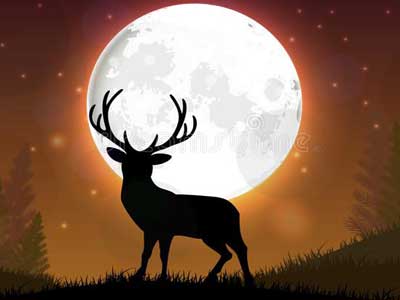Langen worked with colleagues from the University of Salamanca, Spain. Langen obtained a database of 28,000 vehicle-deer accidents in New York State and his colleagues in Spain obtained similar data for accidents involved wild boars and two species of deer to compare to Langen’s data.
“We found that, for whitetail deer and for two of the three animals that we looked at in Spain, that there are relatively more accidents during the full moon than other lunar phases and that most of the accidents occur during the brightest time,” Langen said. “We believe that is because the deer are moving more.”
Langen said deer feel more comfortable moving farther away from cover during the full moon.
“We think that they can see predators, or at least they think they can,” he said. “They feel safer. They are still under the cover of darkness but they can see farther.”
Langen said vehicle-deer accidents are a major cause of injury and property damage, and there is a lot of interest in finding out more about when and where these accidents occur.
Information regarding vehicle accidents as they relate to the lunar cycle can be useful for first responders and emergency clinics and can allow them to anticipate and prepare for an uptick in calls.
While it’s beneficial for drivers to know there is a greater possibility of a collision with a deer during a full moon, Langen hopes the information will not create a false sense of security during other times.
“The fact that there are more accidents during the full moon does not mean there are no accidents during the new moon,” he said. “In fact, it is going from what is a fairly frequent occurrence (during the new moon) to even more frequent occurrence (during the full moon).”

















Related Items
India goes to Moon again, this time coming back to Earth after landing...
Cross-country cinema collaboration in full swing between India, Europe
Center sanctioned 2,877 e-vehicle charging stations, Maharashtra tops